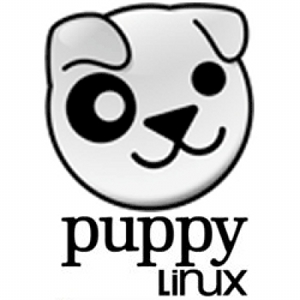Linux’s Marketing Problem
The cult classic movie Office Space is a scathing critique of life for software engineers in a cubicle farm, and it did get a lot of things right even if it didn’t always mean to. One of those is the character of Tom Smykowski whose job is to “deal with the customers so the engineers don’t have to”. The movie treats Tom and his job as a punchline in a way, but his role is actually very important for most real businesses that rely on engineers or programmers for their core products.
Engineers can have difficulty relating to customers, and often don’t have the time (or even willingness) to handle the logistics of interacting with them in the first place. Customers may get frustrated understanding engineers or communicating their ideas clearly to them. A person like Tom Smykowski is often necessary to bridge the gap and smooth out the rough edges on both sides, but in the Linux world there are very few Toms to rely on. The customers, or users, have to deal directly with the engineers in many situations, and it’s not working out very well for either group. Linux has a marketing problem, and it needs a marketing solution if it ever wants to increase its market share in the PC realm.
If you’ve ever gone further into the diverse and layered world of Linux than installing a pre-packaged distribution like Ubuntu or Mint, you’ve probably come across someone who claims that the proper way to refer to “Linux” is actually as “GNU/Linux”, or has gone on a rant about how binary blobs are dangerous, or any number of other topics. Any of these points may in fact be valid, but will instantly turn away anyone who is simply looking for a quality piece of software and may not yet care about the finer points of FOSS or the motivations of the people who are involved in creating the software. Truly, these developers and coders should be commended and respected for the creations that they have brought into the world but can’t be expected to market their products effectively since they aren’t marketers. These beliefs about software are passionately held and firmly believed, but aren’t a good way of interacting with the outside world. The core problem here is that people with deep knowledge on a subject often have difficulty relating that knowledge to the general public, and they need some help.
2099: The Year of Linux on the Desktop
Let’s look a little deeper into this problem as it relates to Linux and take a broad overview of the current state of operating system useage rates. For desktops and laptops, Windows has 87% of the market, with macOS trailing at around 10% and Linux under 4%. Both Microsoft and Apple have huge marketing budgets and also benefit from some institutional advantage here. But if we look at systems who do not rely on marketing for sales, such as the supercomputing or server worlds, Linux is dominant in every way. Virtually 100% of supercomputers use Linux now. How you define a webserver is contentious, and Linux figures range from 70% to 98% depending on whether you count cloud services and subdomains, but anyway Linux runs the vast majority of the web. Even smartphones are dominated by the Linux-powered Android, with about 65% of devices, 20% using iOS, and the rest being an amalgamation of fading Blackberries, Windows Phones, and others.
From these numbers we can infer that there is some intrinsic benefit to working in a Linux environment. Not only does it have dominance when raw computing ability is needed, either in a supercomputer or a webserver, but it must have some ability to effectively work as a personal computer as well, otherwise Android wouldn’t be so popular on smartphones and tablets. From there it follows that the only reason that Microsoft and Apple dominate the desktop world is because they have a marketing group behind their products, which provides customers with a comfortable customer service layer between themselves and the engineers and programmers at those companies, and also drowns out the message that Linux even exists in the personal computing realm.
You Can’t Handle the Linux
To give an example of how frustrating it can be to get through jargon in the Linux world, take a look at Puppy Linux, a version of Linux specifically designed to run on a jump drive or on legacy hardware. It’s been around since the early 2000s, so it’s not new to the game. Its main features are its small size and the ability to save its state to the jump drive it’s installed on, preserving the settings and files between reboots and across different machines.
 Cute, but he can bite!
Cute, but he can bite!
The installation process is not straightforward, despite its age, and requires two separate jump drives or a single jump drive and a computer with Puppy already installed. It seems as though the website for the distribution should have directions, or at least link to the directions. Instead, the front page is largely a treatise on how Puppy Linux isn’t actually a “distribution” per se, and a technical description of what does and doesn’t count as a true Linux distribution.
Confusingly, underneath this paragraph is a set of download links labeled “Official Distributions”. This is a perfect example of the customer having too much direct interaction with the engineers. It’s as if we have to listen to a lecture on the difference between Phillips and Torx screws before being allowed to use a screwdriver for a simple task. We need to know how to install and use the software first, and then we can investigate its nuances and ideology once we know how to use it.
Of course we’re picking on Puppy Linux a little to help illustrate a point, but this trend is far from rare in the Linux world. On the other hand, a counterexample of how even a simple buffer between users and developers can work, and work well, can be found at Canonical, the company that manages the Ubuntu distribution. Their home page is informative, easy to understand, and not cluttered by jargon. The download page is clearly located, as are directions for installing the software. There are some hiccups though, like the 64-bit versions being labeled as “AMD” despite being able to run on Intel hardware, which is a needless holdover from a forgotten time when 32-bit processors were the norm. Nonetheless, it’s a great example of how smooth a Linux distribution can be when a group of people who understand people’s needs and wants act as a Tom Smykowski-like layer between the creators of the software and its users.
The Problem is Choice
Part of the problem too is that Linux and most of its associated software is free and open source. What is often a strength when it comes to the quality of software and its flexibility and customizablity becomes a weakness when there’s no revenue coming in to actually fund a marketing group that would be able to address this core communications issue between potential future users and the creators of the software. Canonical, Red Hat, SUSE and others all had varying successes, but this illistrates another problem: the splintered nature of open-source software causes a fragmenting not just in the software itself but the resources.
Imagine if there were hundreds of different versions of macOS that all Apple users had to learn about and then decide which one was the best for their needs. Instead, Apple maintained its unity and is all the better for it, from a user’s point-of-view. They also have an annual operating budget of $71 billion compared to Canonical’s $6.2 million, which surely doesn’t hurt Apple either and further cements the point that marketing (and budget size) is important.
 “Penguins” by TomaLaPlaya
“Penguins” by TomaLaPlaya
Now, I am making a few assumptions here, namely that “the Linux community” is a monolithic bloc rather than a loose confederation of people who have specific, often unrelated, interests within the computing world. There is no single point-of-contact for all things Linux-related, and that makes it a little difficult to generalize about the entire community as a whole. To that end, there is no single “goal” of the Linux community and no one in it may even care about having a 1-2% market share in the personal computing arena.
As an electrical engineer and someone who occasionally has difficulty with pointers when stumbling through code, I am admittedly on the outskirts of the community as a whole, but this critique comes from a place of respect and admiration for everyone who has made it possible for me to use free software, even if I have to work hard to figure things out sometimes. I have been using Linux exclusively since I ditched XP for 5.10 Breezy Badger and would love to live in a world where I’m not forced into the corporate hellscape of a Windows environment every day for no other reason than most people already know how to use Windows.
With a cohesive marketing strategy, I think this could become a reality, but it won’t happen through passionate essays on “free as in freedom” or the proper way to pronounce “GNU” or the benefits of using Gentoo instead of Arch. It’ll only come if someone can unify all the splintered groups around a cohesive, simple message and market it to the public. We need someone who can turn something like a “Jump to Conclusions Mat” into a million dollars.
from CommaFeed - Real Time Trends Network https://ift.tt/2q5MJwC
via IFTTT
Comments
Post a Comment